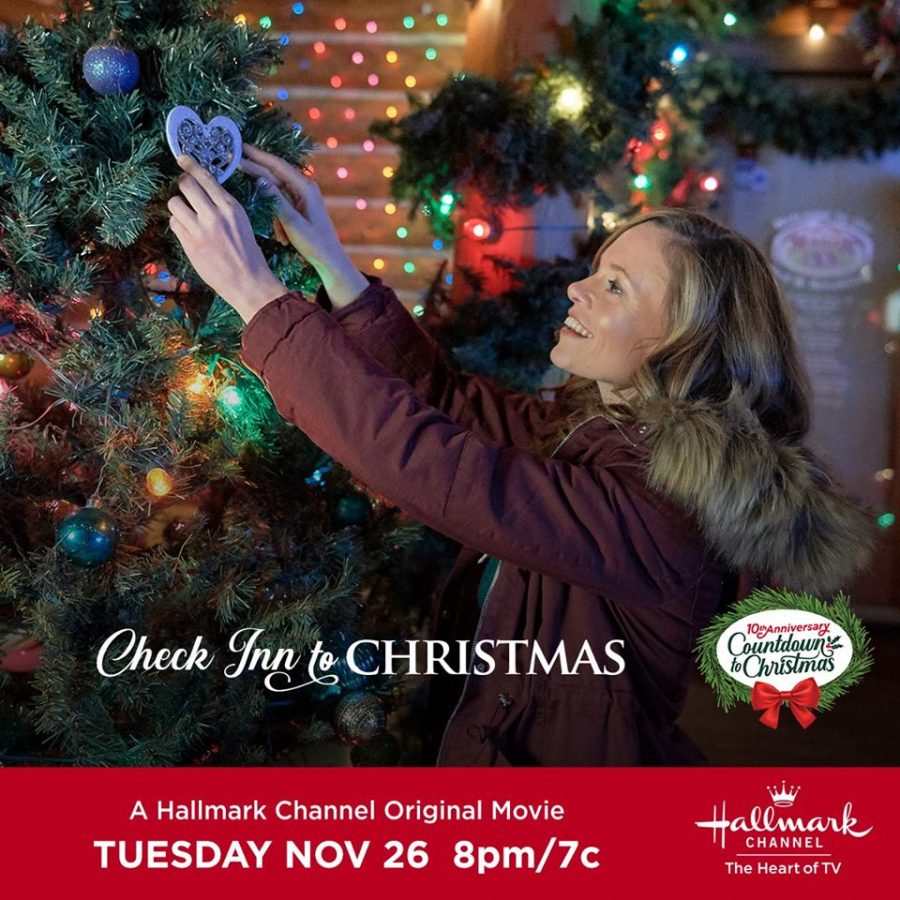A young, but not too young, single woman revisits her hometown for the holidays.
There’s always a light dusting of snow on the ground and there’s definitely a gazebo somewhere in the center of town. Before she can even settle into being back home, she runs into a clean-cut, yet still boyishly charming man who owns a small holiday-themed business. After a series of chance encounters, almost-kisses and plenty of unresolved tension, they find themselves at the same Christmas party. After they both admit what the woman’s quirky best friend knew all along, they find themselves under the mistletoe and the screen fades to black.
Yep, you just watched a Hallmark movie.
The Hallmark Channel is in the midst of rolling out 40 new Christmas movies to
celebrate its 10th anniversary. That’s three more than last year’s 37 new releases, making it a new record. For anyone who’s seen even a couple of these movies, it’s not hard to imagine how they manage to produce more than 30 of them every holiday season. There’s a clear formula; I would believe you if you told me that the Hallmark writers room contains a big, “The Price Is Right” style wheel with phrases like “small town tree lighting” and “dead mom backstory” that are then hurriedly pasted together into a coherent script. In theory, that kind of repetitive, predictable writing shouldn’t work, especially not for 10 years. Yet, the Hallmark Channel attracted more female viewers than any other cable network last year.
Despite their obvious popularity, Hallmark movies are a magnet for mocking comments.
A quick Google search turns up dozens of snarky articles and lists of the worst Hallmark
Christmas movies. The franchise’s wholesome kitsch has even been parodied many times on Saturday Night Live. A 2017 skit, “Hallmark Channel Christmas Promo,” offers up a fitting tagline for the franchise: “From the company that writes one-sentence greeting cards comes 21 full-length movies!” Perhaps unknowingly, the writers at SNL hit on the very thing that makes Hallmark movies so satisfying — they’re simple, straightforward and exist only for a rush of sentimentalism.
In “Christmas Wishes and Mistletoe Kisses”, which aired for the first time in late
October, interior designer and single mom Abbey (Jill Wagner) is hired to decorate enigmatic businessman Nick Sinclair’s (Matthew Davis) mansion for a Christmas gala.
It’s glaringly obvious from the start that Abbey and Nick are going to end up together — they randomly end up under some mistletoe nearly every time they’re both on screen — and yet Mike Acosta (Brandon Quinn), a charming doctor, is thrown into the mix as a secondary love interest. It’s easy to wonder why the writers would even include another potential romantic partner for Abbey if the inevitability of her and Nick’s relationship is made clear from the start. However, Mike’s character isn’t really about presenting another option for Abbey, it’s about creating the kind of low-stakes tension that keeps viewers interested without inducing any actual stress. When you watch a romantic movie in the theater it feels as if there’s a real chance of it ending in tragedy, but when you sit down to watch a Hallmark movie you know exactly how it’s going to end — with the two leads finally admitting their feelings and then fading out into the suggestion of a happy future.
The real beauty of the Hallmark channel and its staunch commitment to happy endings is its own self-awareness. The network knows that its movies are corny and predictable — and that that’s exactly what makes them so addictive. With on-the-nose titles like “It’s Christmas, Eve” and “Check Inn to Christmas”, it’s clear from the start that Hallmark isn’t trying to make their content out to be any less ridiculous than it is. Cookie-cutter small towns where Christmas is always just around the corner and relationships are never too complicated to navigate provide the same kind of holiday season comfort that a mug of hot chocolate does. On top of that, Hallmark movies conjure a sense of nostalgia for a reality that doesn’t really exist and for a time when Christmas was all about believing in the impossible.
Molly Hamilton can be reached at [email protected].




















